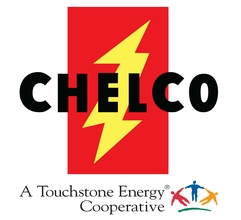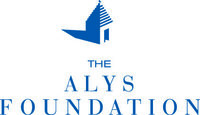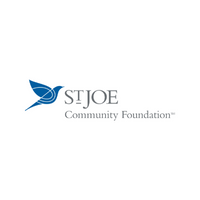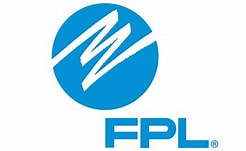Circling up the Students for Literacy Excitement
- School:
- Walton High School
- Subject:
- Literacy
- Teacher:
- Kelley Stephenson
- Students Impacted:
- 100
- Grade:
- 9
- Date:
- October 4, 2018
Investor
Thank you to the following investor for funding this grant.
St. Joe Community Foundation - $999.36
Original Grant Overview
Goal
Our goal is to support our School Improvement Plan (SIP) for goals 1 and 5, Goal 1 states, "...80% of students in the ninth grade will obtain a scale score of 950 [...] or an SGP [student growth percentile] of 55 as demonstrated on the STAR [Reading] test [given in August and December 2018, and April 2019]." Goal 5 states, "80% of teachers will effectively implement a variety of at least 3 WICOR [Writing, Inquiry, Collaboration, Organization, and Reading] strategies each 9 weeks' grading period [...]."
To achieve this goal, we would like to purchase relevant literature circle books for use in the classroom with my English 1 Honors students. Students will have choice of the selections to read in their circle with each round.
By providing my English 1 Honors class with fiction and non-fiction books for their literature circle selections, I will encourage reading and support our school goals.
What will be done with my students
All English 1 Honors students will be have access to the 15 literature circle novels thanks to the funding from this grant. We estimate starting our first literature circle cycle December 3, 2018 (provided shipping allows for this timeline) and ending December 21, 2018, to end the semester.
I will provide a book talk for each book prior to the arrival of the books so once they arrive we can hit the ground running -- I mean reading! I will use my own knowledge from reading the books and couple that with knowledge from my peers and district reading coach. I anticipate that this will create a buzz for the books. I will then have the students rank the books in order of what they want to read first. This will allow me to place them in their unique literature circle for each round.
First, groups will be made of 4-5 students, depending on their initial rankings. Second, roles will be decided by the literature circle members. The roles are Discussion Leader, Diction Detective, Bridge Builder, Reporter, and Artist.
Discussion Leader - Your job is to develop a list of questions you think your group should discuss about the assigned section of the book. Use your knowledge of levels of questions to create thought-provoking literal, interpretative, and universal questions. Try to create questions that encourage your group to consider many ideas. Help your group explore these important ideas and share their reactions. You will be in charge of leading the day's discussion.
Diction Detective - Your job is to carefully examine the diction (word choice) in the assigned section. Search for words, phrases and passages that are especially descriptive, powerful, funny, thought-provoking, surprising, or even confusing. List the words or phrases and explain why you selected them. Then, write your thoughts about why the author might have selected these words or phrases. What is the author trying to say? How does the diction help the author achieve his or her purpose? What tone to the words indicate?
Bridge Builder - Your job is to build bridges between the events of the book and other people, places, or events in school, the community, or your own life. Look for connections between the text, yourself, other texts, and the world. Also, make connections between what has happened before and what might happen as the narrative continues. Look for the characters' internal and external conflicts and the ways that these conflicts influence their actions.
Reporter - Your job is to identify and report on the key points of the reading assignment. Make a list or write a summary that describes how the writer develops the setting, plot, and characters in this section of the book. Consider how characters interact, major events that occur, and shifts in the setting or the mood that seem significant. Share your report at the beginning of the group meeting to help your group focus on the key ideas presented in the reading. Like that of a newspaper reporter, your report must be concise, yet thorough.
Artist - Your job is to create an illustration related to the reading. It can be a sketch, cartoon, diagram, flow chart, or other depiction. You can choose to illustrate a scene, an idea, a symbol, or a character. Show your illustration to the group without any explanation. Ask each group member to respond, either by making a comment or asking a question. After everyone has responded, you may explain your illustration and answer any questions that have not been answered.
Each student will be responsible for preparing information for each meeting according to their role.
Each group will then formulate a plan for reading and discussing the book. I may assist with this to make sure there is rigor involved with the reading schedule balanced with reality in the timeline.
During reading, each student will have a double-entry journal to complete as they read. They are expected to record entries that may include interesting quotations from the text, questions about the text, and connections between the text and his/her own life. During the literature circle meeting times, students will trade journals with another group member and respond to selected entries under the column for peer response. Also at each meeting, each member will have a graphic organizer for them to take notes as their group engages in literature circle discussions.
Finally, each group will have a reflection sheet to complete as a group. This will help me to see challenges they faced and goals they are setting as a literature circle.
Additionally, as of 10/4/18, of the 15 fiction and nonfiction titles on this grant proposal, our school library only has record of 10 of them in inventory. Of those books our school library has on the shelves currently, many of the titles have only one copy for our school of over 750 students. This grant will enable me to put more books in the hands of students who can improve their reading and writing skills. It is a win-win.
The following three ELA Standards will also be greatly impacted through this grant for books in the English 1 classrooms.
(1) LAFS.9-10.RI.4.10, "By the end of grade 9, read and comprehend literary nonfiction in the grades 9–10 text complexity band proficiently, with scaffolding as needed at the high end of the range."
(2) LAFS.9-10.RL.4-10, "By the end of grade 9, read and comprehend literature, including stories, dramas, and poems, in the grades 9–10 text complexity band proficiently, with scaffolding as needed at the high end of the range."
(3) LAFS.9-10.W.4.10, "Write routinely over extended time frames (time for research, reflection, and revision) and shorter time frames (a single sitting or a day or two) for a range of tasks, purposes, and audiences."
All students took the STAR Reading Assessment in August 2017. Based on the data, 41% of our current 9th graders are meeting the 950 or higher scale score that is set as goal 1 above. We have our work cut out for us in assisting our 9th graders in strategies to improve their reading. All students will take the STAR Reading Assessment again in December 2017 and April 2018. The results from these tests with our 9th graders will show the impact this grant has made on them compared to where they started in August 2017.
If students have books that are relevant and accessible to them, they will more likely read them and thus their reading score will likely increase; this is a win-win for the students, our school, and in turn our district. In our vision for the Walton County School District we want to be recognized among the top school districts in the state of Florida. The ripples that can be felt from receiving this grant could travel far and wide across Walton County and the entire state of Florida!
Benefits to my students
First, some students are overwhelmed when they walk in to our Library Media Center to find a book. They have no idea where to begin. With a classroom library of literature circle books, I can support him/her in locating a book that will grab their interest and be at their appropriate reading level. I see this as a win-win for teachers and students alike to take away frustration and undue stress from everyone.
An additional benefit is that we can save paper by not making copies of the novel from PDF form. We will cut down on our paper consumption and paper costs, which is always a concern for school districts.
Lastly, the benefit for me will be that I have the materials needed to provide this excellent activity for my English 1 Honors students. The research is out there to show the vast benefits of literature circles on students. The knowledge that my personal money will not be needed in the classroom for materials will take the burden off of me and my family. Too many times I just pay to have what the students need without being refunded. This grant will alleviate that burden and enable me to teach and students to read more!
Budget Narrative
I am requesting the 15 titles listed for my students to use in my classroom for literature circles. We plan to spend as close to the $1000 as possible - my books come in at $999.36. Of those books, we have a need to especially get five titles that our school library does not currently carry. Those title are "The Westing Game", "Forged by Fire", Life of Pi", "Ready Player One", and "The Things They Carried".
Items
| # | Item | Cost |
|---|---|---|
| 1 | Brown Girl Dreaming by J. Woodson 8.79 x 7 | $61.53 |
| 2 | Darkness Before Dawn by S. Draper 7.99 x 8 | $63.92 |
| 3 | Ender's Game by O.S. Card 6.39 x 8 | $51.12 |
| 4 | Forged by Fire by S. Draper 7.99 x 8 | $63.92 |
| 5 | I am Malala by M. Yousafzai 12.80 x 7 | $89.60 |
| 6 | Life of Pi by Y. Martel 12.76 x 7 | $89.32 |
| 7 | Ready Player One by E. Cline 7.99 x 8 | $63.92 |
| 8 | Refugee by A. Gratz 13.59 x 7 | $95.13 |
| 9 | Rosa Parks: My Story by R. Parks 6.39 x 8 | $51.12 |
| 10 | Salt to the Sea by R. Sepetys 8.79 x 8 | $70.32 |
| 11 | Scarlet Letter by N. Hawthorne 4.17 x 8 | $33.36 |
| 12 | Speak by A. Anderson 8.79 x 7 | $61.53 |
| 13 | Tears of a Tiger by S. Draper 7.99 x 8 | $63.92 |
| 14 | Things They Carried by T. O'Brien 12.79 x 7 | $89.53 |
| 15 | Westing Game by E. Raskin 6.39 x 8 | $51.12 |
| Total: | $999.36 |






Share
Please share this page to help in fulfilling this grant.
Email to a Friend